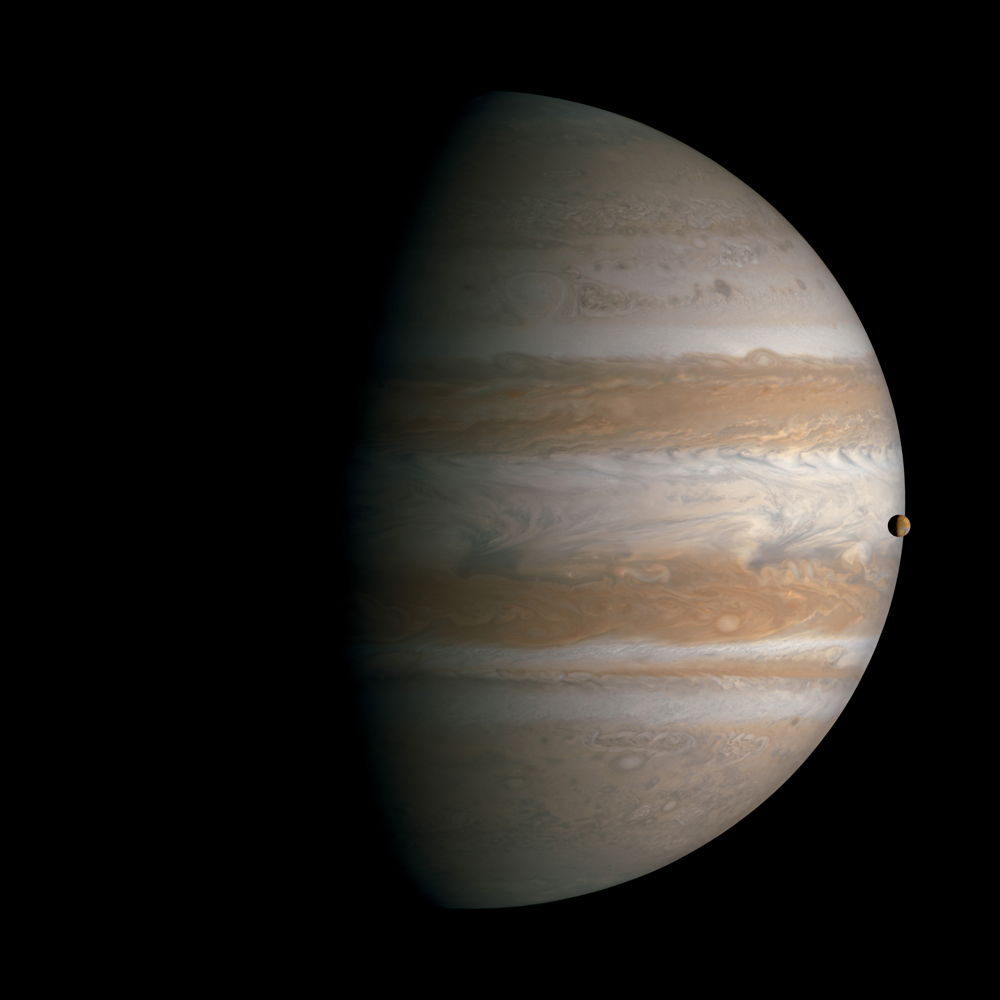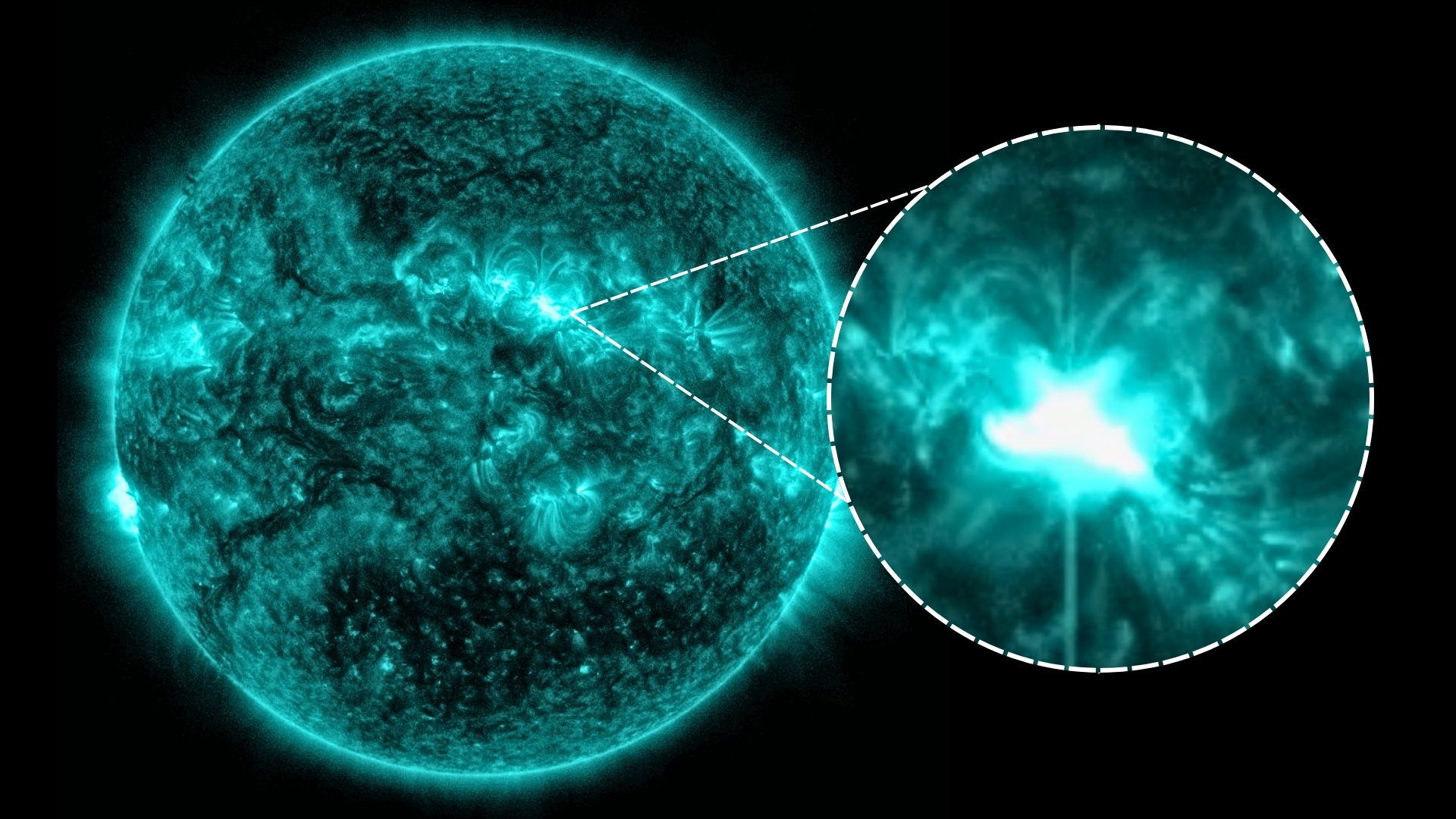Jupiter's Atmosphere
The atmosphere of Jupiter essentially makes up the entire planet. The gas giant has no firm surface to touch down on. Instead, it is composed almost entirely of hydrogen and helium, with a few traces of other gases comprising a tiny percentage of its air.
Jupiter's atmosphere is one of the key science targets for NASA's Juno mission, which began orbiting the planet in 2016. The spacecraft is looking to measure the amount of water in the atmosphere, which should tell scientists whether their current ideas about how the solar system formed are correct.
Atmospheric makeup
Jupiter is made up predominantly of hydrogen. The simple, basic gas, a prime ingredient on the sun, accounts for 90 percent of the atmosphere. Nearly 10 percent is composed of helium. A very small fraction of the atmosphere is made up of compounds such as ammonia, sulfur, methane, and water vapor.
Traveling from the outermost edges of Jupiter toward its center, pressure and temperature goes up. These increases cause the gases to separate into layers. Deep down, the hydrogen changes from a gas to a liquid. It can even become metallic.
Jupiter boasts an enormous supply of hydrogen and helium that make it the most massive planet in the solar system.

Layers of the atmosphere
Scientists use changes in the temperature and pressure of the atmosphere to determine the various atmospheric layers.
The surface of the planet, or the bottom of the atmosphere, is the point where scientists have calculated that the atmospheric pressure is equal to one bar, the same as found at the surface of Earth.
The layer resting on the "surface" of Jupiter is known as the troposphere, and extends to approximately 31 miles (50 kilometers) above the surface. The troposphere contains ammonia, ammonium hydrosulfide and water, which form the distinctive red and white bands seen from Earth. The colder white bands are known as zones, while the darker red ones are called belts. Gases within the zones rise, while within the belts they fall.
Winds generally keep the two regions separate, but sometimes the icy white clouds will overlay the red bands, causing them to disappear for a period of time. Scientists have only observed the southern band periodically vanishing; the northern band remains perversely stable. The troposphere also contains dense clouds of water that influence the atmospheric dynamics.
As you move higher in the troposphere, the temperature drops, ranging from minus 260 Fahrenheit (minus 160 Celsius) to minus 150 F (minus 100 C).
The next layer, the stratosphere, extends to almost 200 miles (320 km) above the surface, containing hazes of hydrocarbons. Here, temperatures start at minus 260 F and rise to approximately minus 150 F (minus 100 C) the higher you go. The stratosphere, like the troposphere, is warmed by the sun and the planet's interior. The stratosphere ends where the pressure is one one-thousandth that found at the surface of Earth.
The thermosphere lies on top of the stratosphere. Temperatures rise to approximately 1,340 F (725 C) at heights of over 600 miles (1,000 km). The aurora around the poles occurs within the thermosphere. The thermosphere can also emit a weak light known as airglow that keeps the night sky from ever being completely dark. The thermosphere is heated by particles from the magnetosphere, as well as by the sun, and has no defined top.
The outermost layer of Jupiter's atmosphere is the exosphere, where gas particles can escape into space. With no clear boundary, the exosphere bleeds into interstellar space.

The Great Red Spot
In addition to the red and white bands that make Jupiter visually stunning, the planet also boasts a prominent feature known as the Great Red Spot. First identified in the 1600s, the spot is actually a violent storm located just south of the planet's equator. The violent hurricane can be seen from telescopes on Earth.
The violent cyclone takes about six Earth-days to completely rotate, and is large enough to contain at least two Earths within it. Recent studies have indicated that the gigantic storm may be shrinking.
Colder than the bands around it, the Great Red Spot must lie higher in the atmosphere. The source of its reddish color has not yet been established, but it varies throughout the region.
Powering the magnetic field
A third of the way into the planet, the hydrogen in the atmosphere becomes metallic, allowing it to conduct electricity. This helps to drive Jupiter's powerful magnetic field. The planet rotates rapidly — once every 9.9 hours — and the rapid spinning causes electrical currents in the metallic hydrogen to generate electricity that powers the planet's magnetic field.
Jupiter's magnetic field is almost 20,000 times as powerful as Earth. The electromagnetic storms they generate can be heard by amateur radio operators on Earth, beamed toward us by the plasmas and magnetic field lines. At times, Jupiter can produce more powerful radio signals than the sun.
Further reading:
- NASA's latest research on Jupiter
- Facts about Jupiter, from National Geographic
- More Jupiter facts, from ThePlanets.org
This article was updated on Oct. 18, 2018 by Space.com Senior Writer, Meghan Bartels.
Join our Space Forums to keep talking space on the latest missions, night sky and more! And if you have a news tip, correction or comment, let us know at: community@space.com.
Breaking space news, the latest updates on rocket launches, skywatching events and more!

Nola Taylor Tillman is a contributing writer for Space.com. She loves all things space and astronomy-related, and always wants to learn more. She has a Bachelor's degree in English and Astrophysics from Agnes Scott College and served as an intern at Sky & Telescope magazine. She loves to speak to groups on astronomy-related subjects. She lives with her husband in Atlanta, Georgia. Follow her on Bluesky at @astrowriter.social.bluesky
